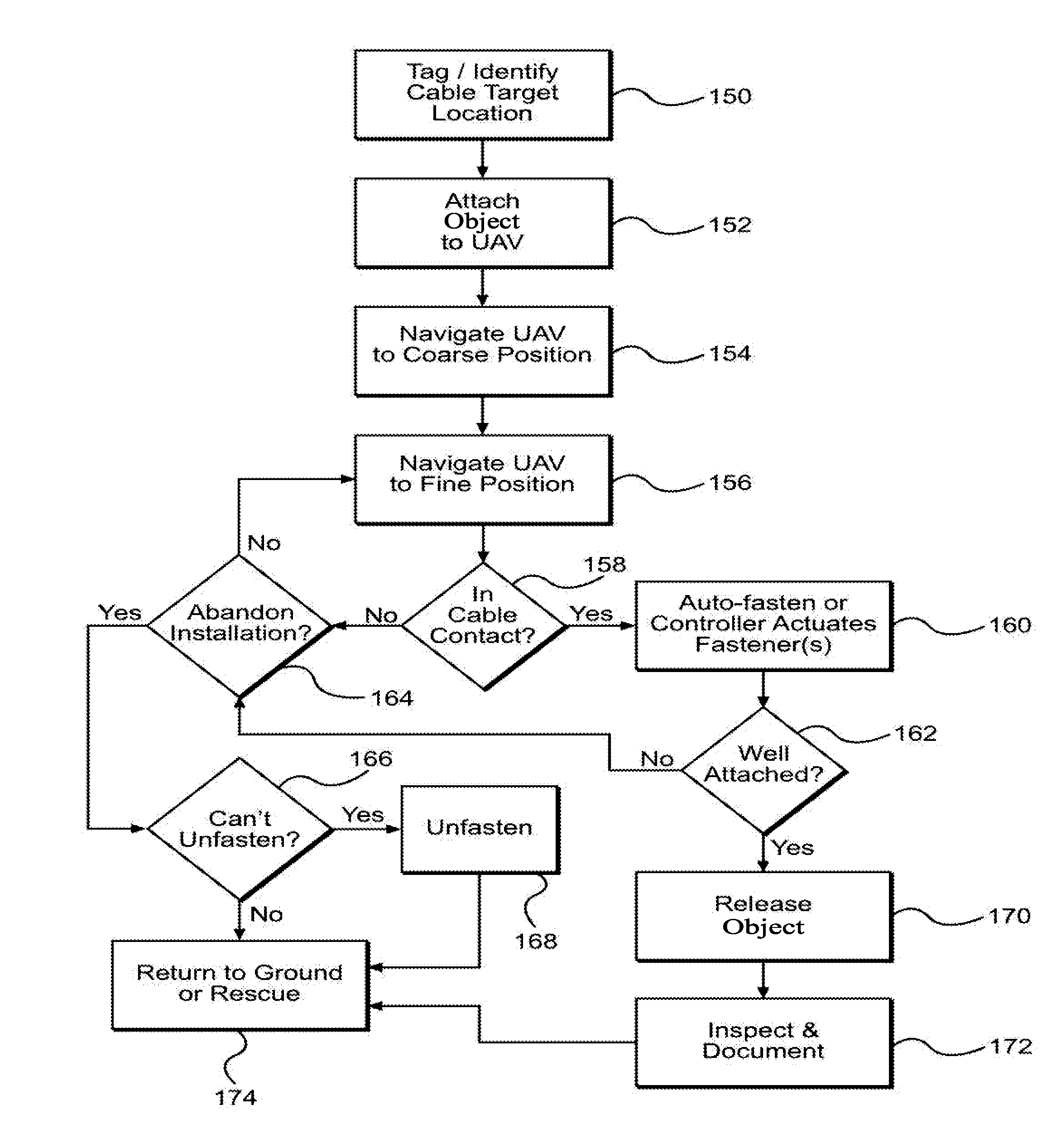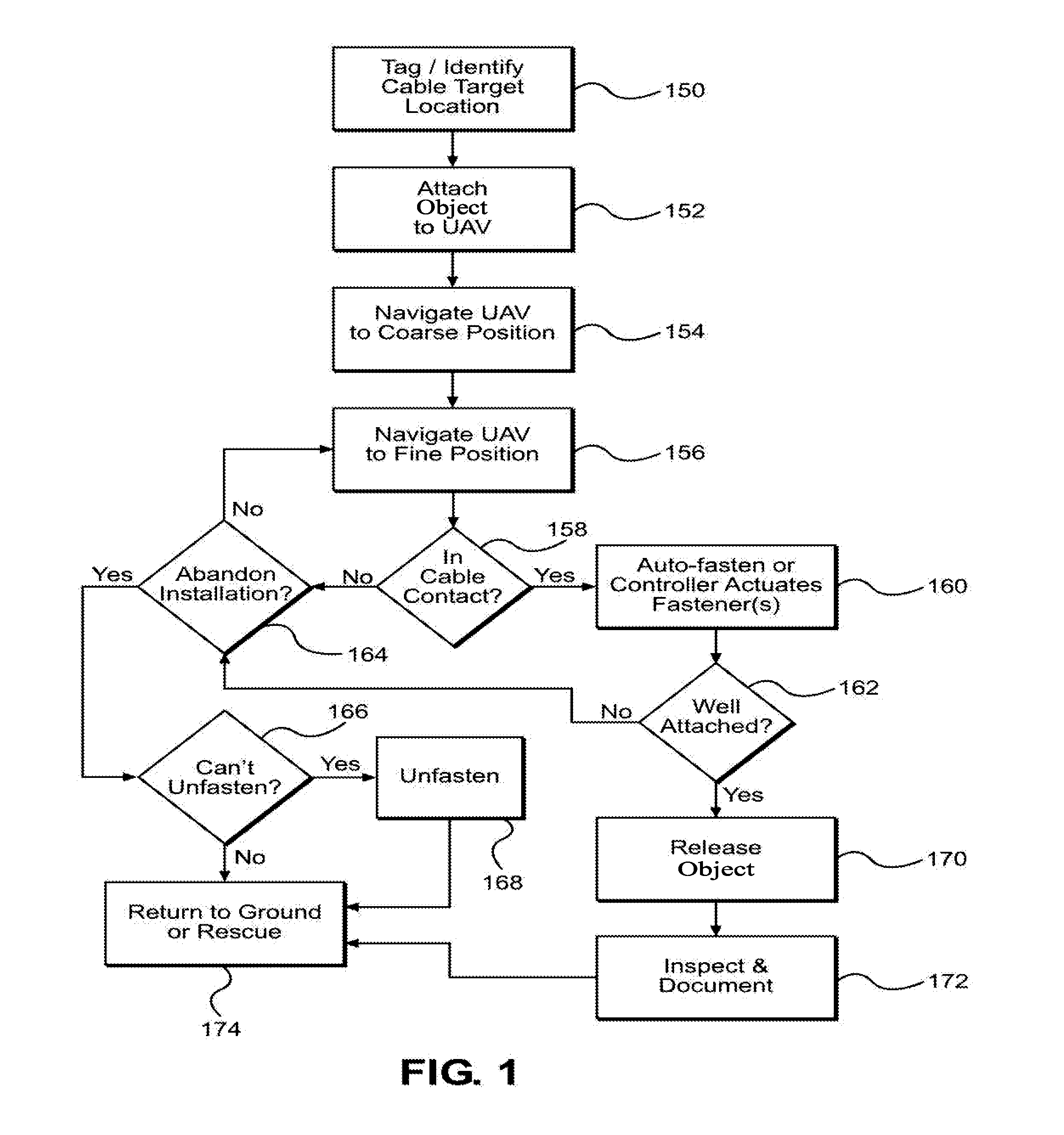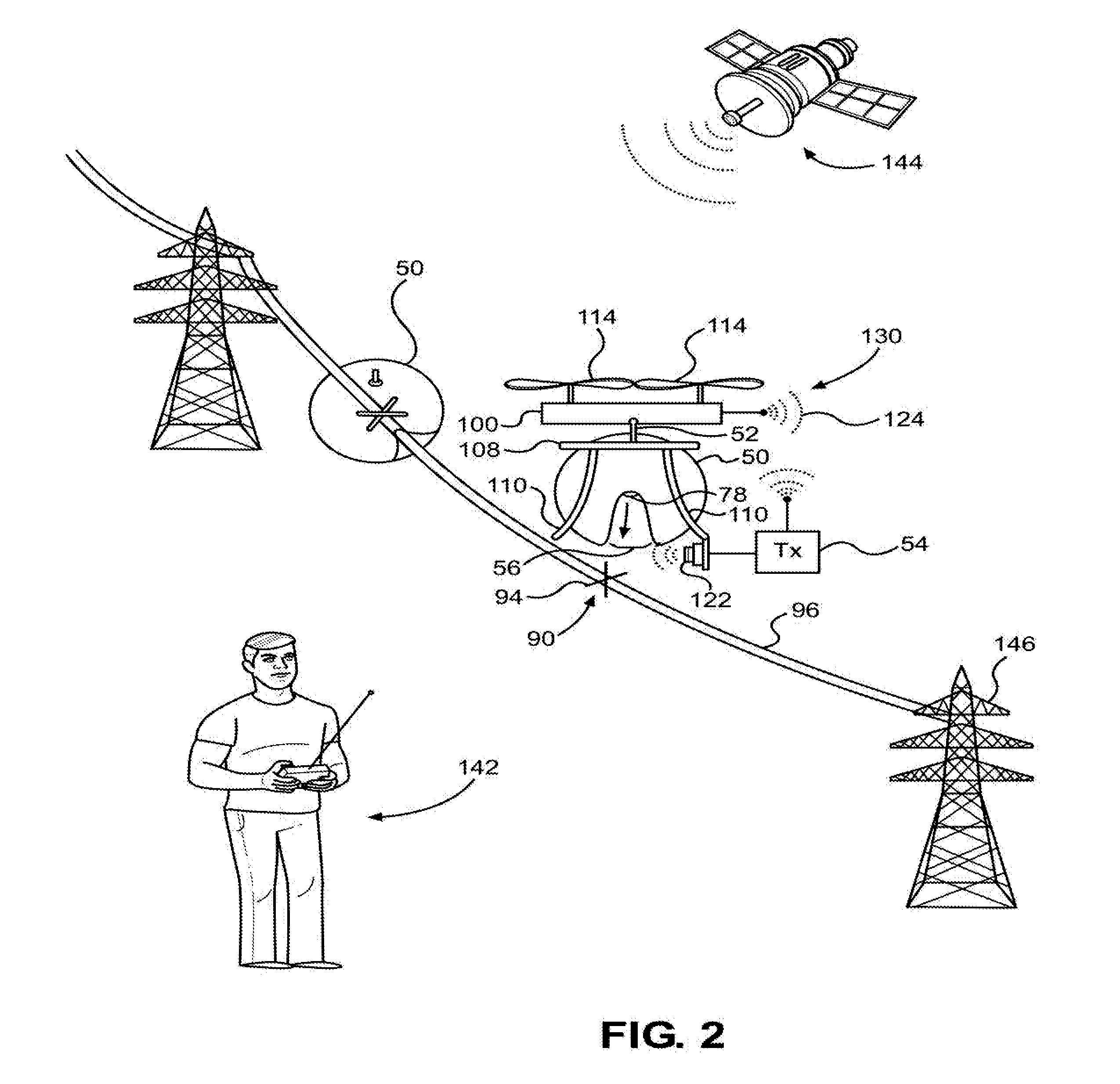Method for installing an object using an unmanned aerial vehicle
a technology of unmanned aerial vehicles and objects, applied in the field of aerial operations, can solve the problems of a large threat to low flying aircraft and birds, wires and cables are particularly dangerous to helicopters, and 40-50% of the resulting accidents are fatal, so as to achieve safe and reliable installation of aerial markers without risking the lives of pilots and linemen or expensive equipment, and increase the scope and range of installation locations. cost effective
- Summary
- Abstract
- Description
- Claims
- Application Information
AI Technical Summary
Benefits of technology
Problems solved by technology
Method used
Image
Examples
Embodiment Construction
[0055]The following description is not to be taken in a limiting sense, but is made merely for the purpose of describing the general principles of exemplary embodiments; many additional embodiments of this invention are possible. It is understood that no limitation of the scope of the invention is thereby intended. The scope of the disclosure should be determined with reference to the Claims. Reference throughout this specification to “one embodiment,”“an embodiment,” or similar language means that a particular feature, structure, or characteristic that is described in connection with the embodiment is included in at least one embodiment of the present disclosure. Thus, appearances of the phrases “in one embodiment,”“in an embodiment,” and similar language throughout this specification may, but do not necessarily, all refer to the same embodiment.
[0056]Further, the described features, structures, or characteristics of the present disclosure may be combined in any suitable manner in ...
PUM
 Login to View More
Login to View More Abstract
Description
Claims
Application Information
 Login to View More
Login to View More - R&D
- Intellectual Property
- Life Sciences
- Materials
- Tech Scout
- Unparalleled Data Quality
- Higher Quality Content
- 60% Fewer Hallucinations
Browse by: Latest US Patents, China's latest patents, Technical Efficacy Thesaurus, Application Domain, Technology Topic, Popular Technical Reports.
© 2025 PatSnap. All rights reserved.Legal|Privacy policy|Modern Slavery Act Transparency Statement|Sitemap|About US| Contact US: help@patsnap.com



